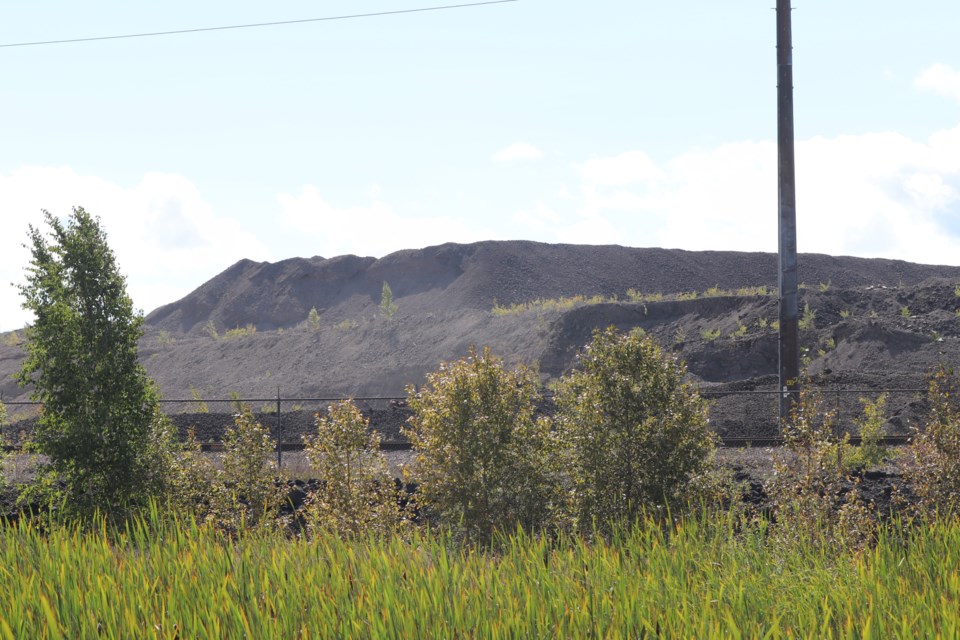EDITOR'S NOTE: Since this article appeared, Algoma Steel has added an updated safety data sheet on blast furnace slag to its website. The new sheet contains no references to its slag having carcinogenic (cancer-causing) issues. It states: "Blast furnace slag is a nonmetallic byproduct from the production of iron. The silicon dioxide may contain trace amounts of crystalline silica. Slag may contain trace amounts of metallic chemicals present in the iron ore at less than 0.1 percent including: iron oxide, manganese oxide, carbon, and zinc oxide." The updated safety data sheet may be viewed here.
No one's certain how much slag Algoma Steel has generated and stored on its property in the 121 years it has operated in Sault Ste. Marie.
What's obvious to anyone driving past the mill property is that there's mountains of the stuff.
"There's a considerable amount," Laura Devoni, the steelmaker's director of corporate affairs and sustainability, tells SooToday.
Blast furnace slag is a waste byproduct of steelmaking.
It contains silicon dioxide, calcium oxide, magnesium oxide, aluminum oxide and sulfur, and Algoma Steel's safety data sheet cautions that repeated exposure by dust inhalation may cause cancer.
"Inhalation may cause serious respiratory irritation or lung damage," the company also warns its employees.
"Repeated inhalation may increase symptoms in individuals with pre-existing chronic lung disease. Heating the product may produce hydrogen sulfide which is a highly flammable toxic gas. Dusts from this product, when combined with water or sweat, produce a corrosive alkaline solution."
Slag exposure may also cause irritation or harm to skin or eyes.
"We are... looking to monetize or reduce our legacy piles of slag," the company says in its inaugural ESG (environmental, social and governance) report issued this month.
"Initiatives are underway to determine or develop alternative uses of various byproducts generated on site.
"Some of the byproducts that we are investigating alternative uses for include various slags, sludges and dusts from our process.
"We are dedicated to reusing and recycling materials, when possible, to divert material from landfills and continuously seek alternative uses for byproducts generated on site.
"Some of these materials include blast furnace slags, mill scale, iron pellet fines, scrap metal, light oil, coal tar, coke braize, and kish iron," the report states.
"It's a technical function at this time," says Loris Molino, Algoma's vice-president, maintenance and operating services.
"We're looking to identify what the best technology is to recover this material. We have approached people who have done this in the past, and we're looking at how effectively our material will be recovered in different types of mechanical recovery systems," Molino says.
Algoma is very interested in recovering whatever iron is present in its slag, using a new facility to be constructed on the property.
The metal would be melted to make more steel.
The aggregates that remain after iron has been extracted are considered less valuable, and are often used for road construction, says Mike Panzeri, senior vice- president, production.
"Steel is the most recycled material in the world," the company says in its ESG report. "Easily recovered with magnets, steel is 100 per cent recyclable and can be recycled time and time again without loss of quality. We recycle or reuse around 80 per cent of all waste materials from generated operations.
"Every steelmaking heat at Algoma contains scrap steel which we recycle through our manufacturing process for new end-use applications.
"As part of our internal grassroots recycling program, we provide excess materials including belting, wood packaging, and industrial bins to employees for personal reuse. Currently this is happening at a small scale, but we hope to continue to grow the initiative in the future," the ESG report states.
